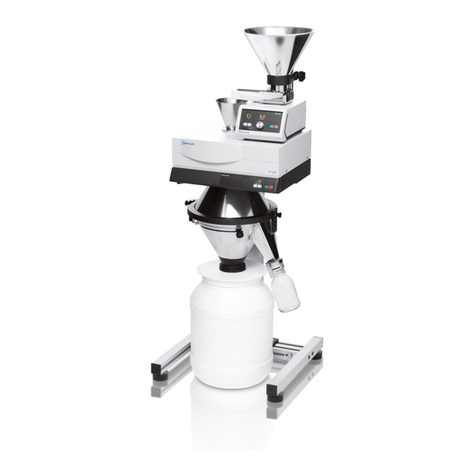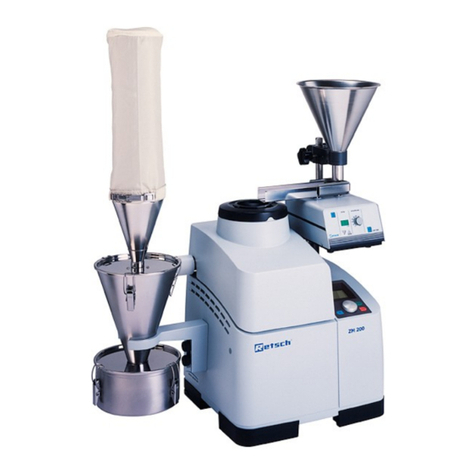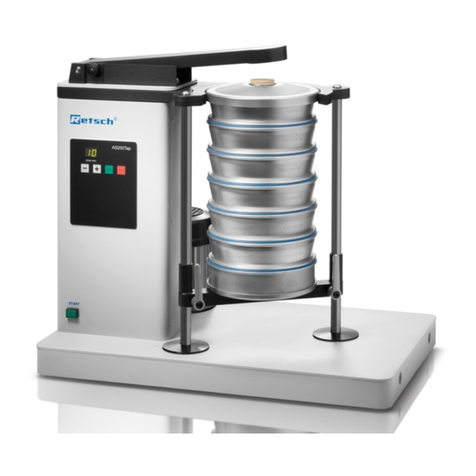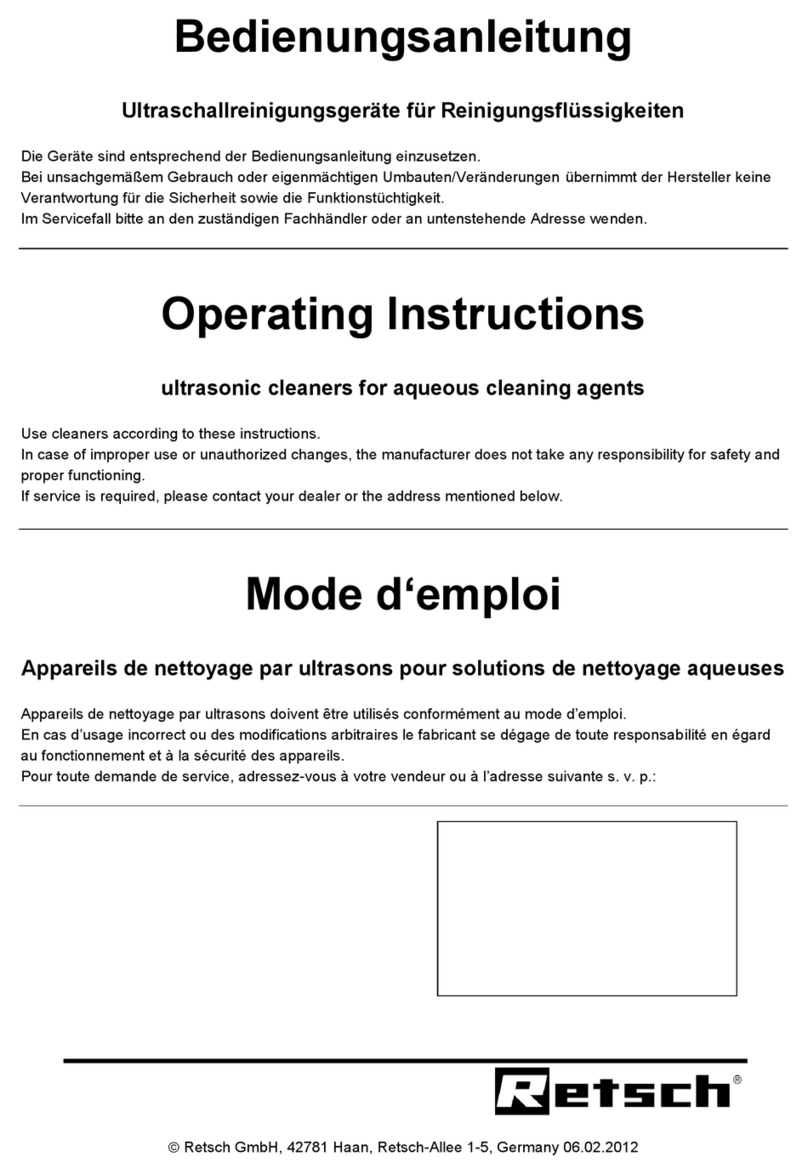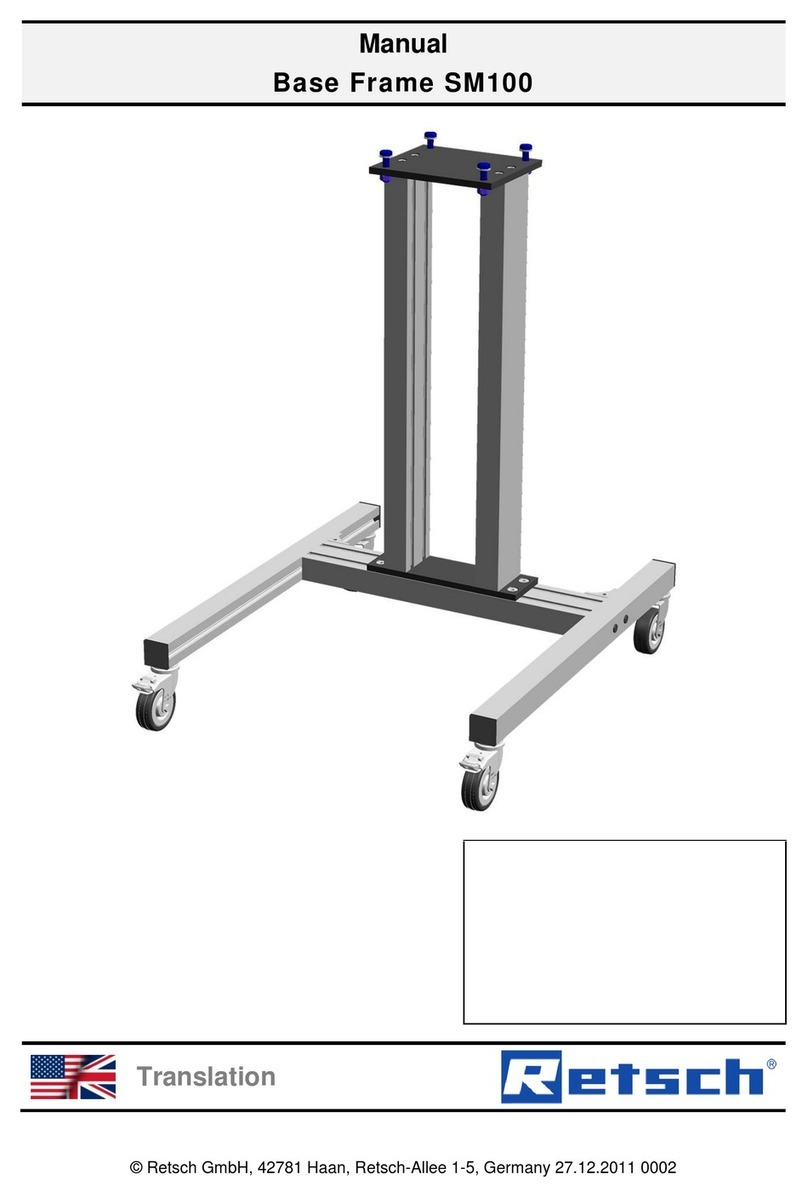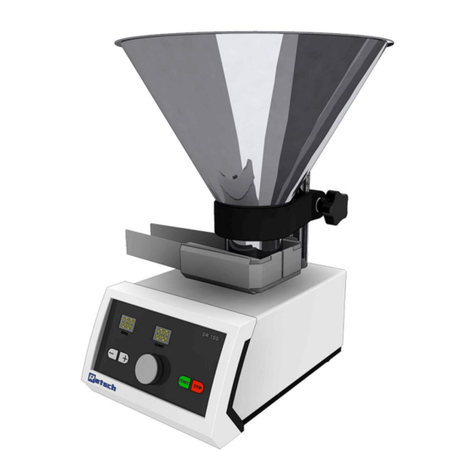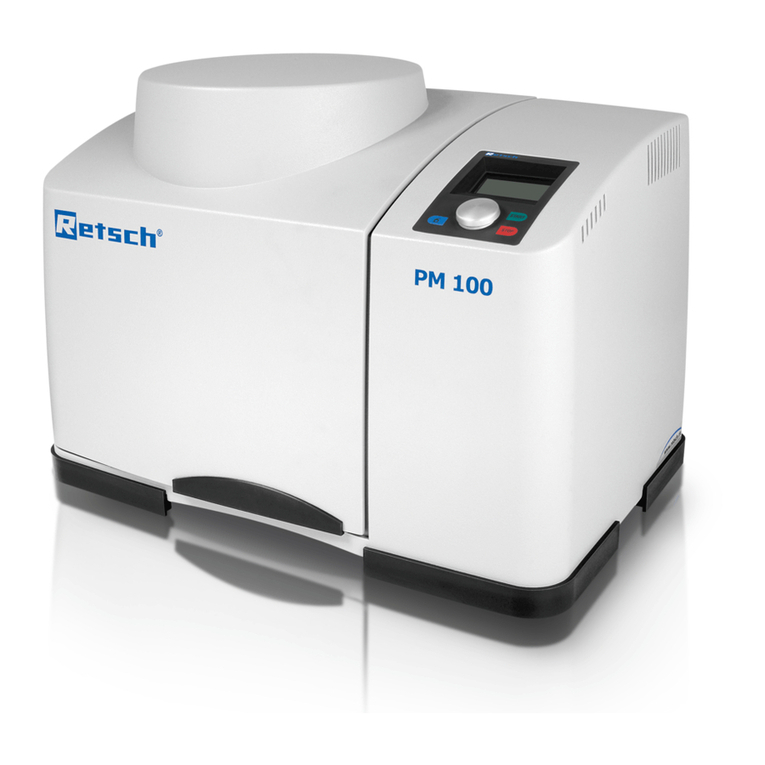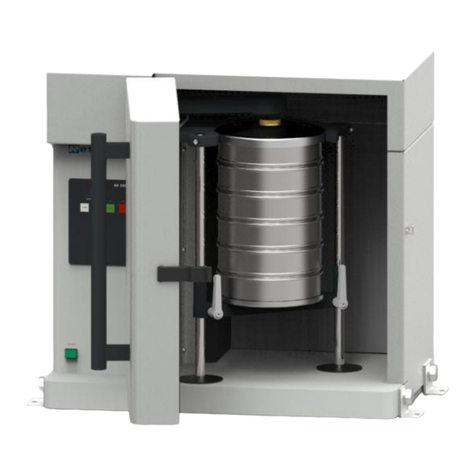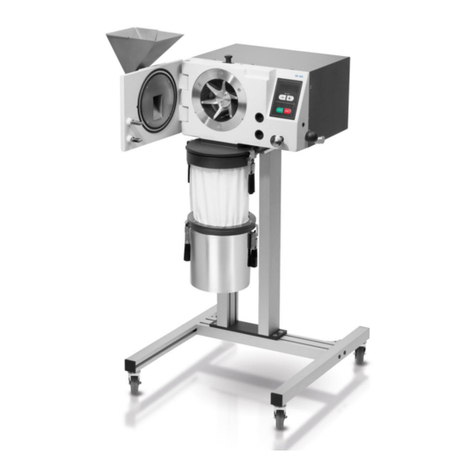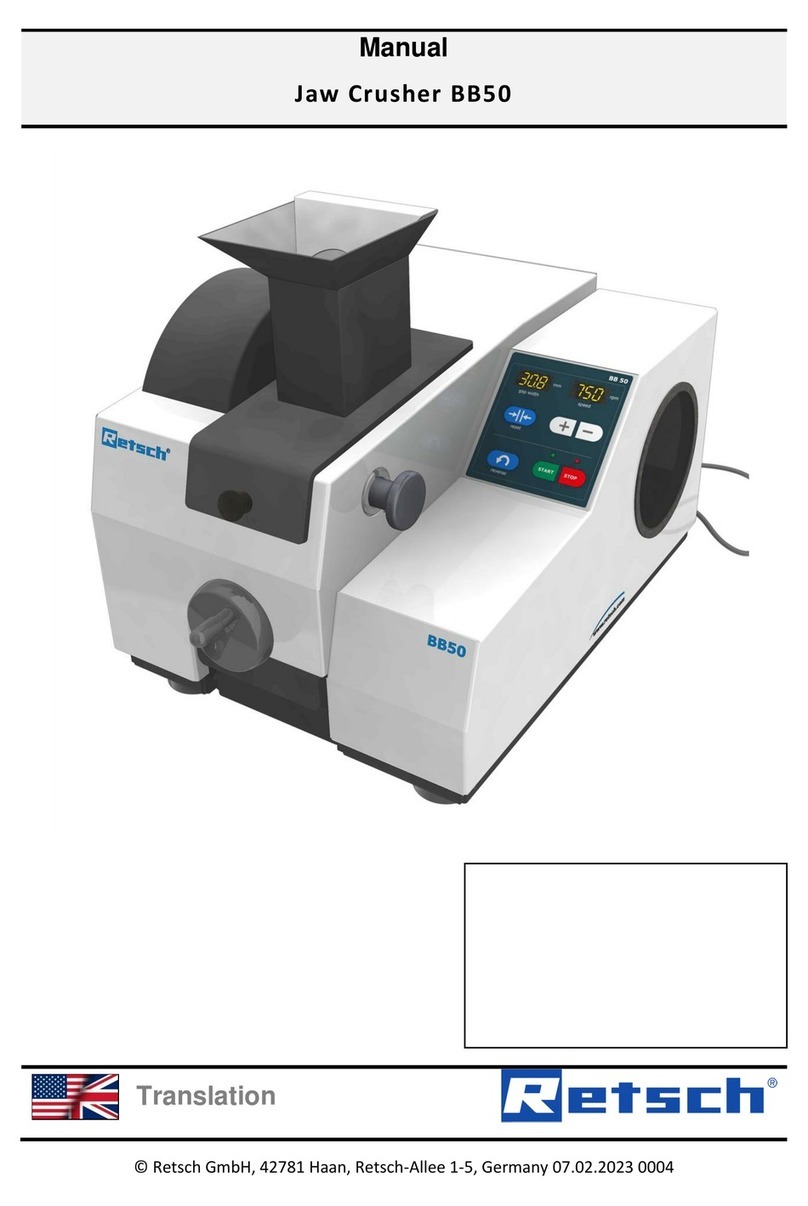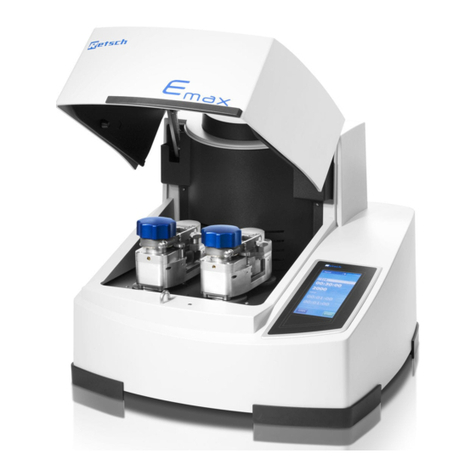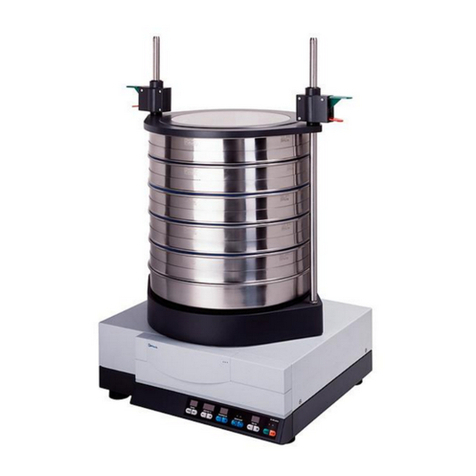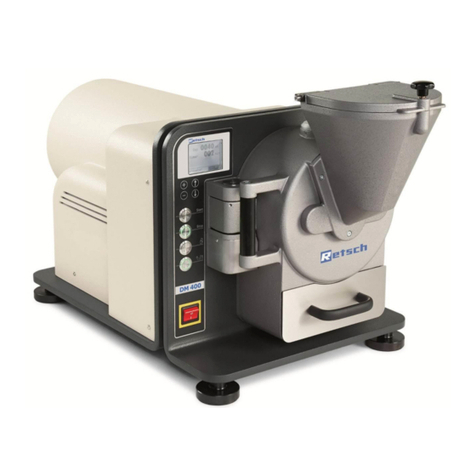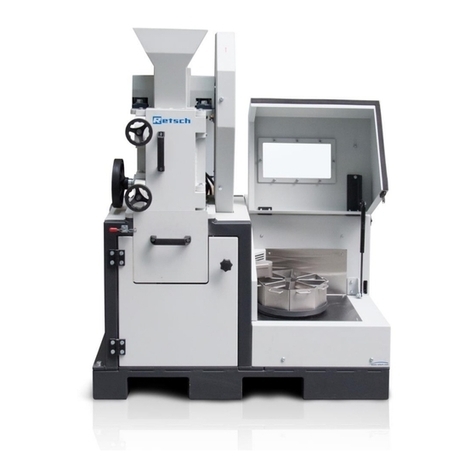07/02/2012 Retsch GmbH 3
Information on these operating instructions................ 2
Safety .......................................................................... 4
Safety instructions.................................................... 4
Warnings................................................................. 5
Repairs ................................................................... 5
Confirmation............................................................ 5
Technical specifications ............................................... 6
Intended use ........................................................... 6
Emissions ................................................................ 7
Maximum loading ..................................................... 7
Protection systems ................................................... 7
Equipment dimensions .............................................. 7
Base area required ................................................... 7
Transport and assembly ............................................... 8
Packaging................................................................ 8
Transport ................................................................ 8
Temperature fluctuations........................................... 8
Intermediate storage ................................................ 8
Requirements for the assembly site ............................ 9
Assembly / transport fastening................................... 9
Re-using the transport fasteners ................................ 9
Electrical connection ................................................. 9
Operation..................................................................... 10
Operating elements and their use ............................... 10
Installing and tensioning the analytical sieves .............. 11
Operating the AS300 control...................................... 12
Switching on and off ................................................. 12
Start - Interrupt - Stop ............................................. 12
Setting the time ....................................................... 12
Intermittent –continuous operation............................ 13
Memory –saving and calling-up sieve parameters ........ 13
Vibration height in "mm" ........................................... 14
Sieve plate acceleration in "g".................................... 14
Setting the sieve plate acceleration in "g".................... 14
Signal tone for the end of sieving ............................... 14
Operating hours display ............................................ 15
Information on “memory” display ............................... 15
Information on sieve plate acceleration mode .............. 16
Time correction ........................................................ 17
Acceleration guidelines.............................................. 17
Retsch Analytical sieves............................................... 18
Sieve accessories ..................................................... 18
Working instructions.................................................... 19
Sieving aids ............................................................. 19
Sieving material quantities ........................................ 19
Wet sieving .................................................................. 20
Required accessories ................................................ 20
Preparations ............................................................ 20
Operation ................................................................ 20
EasySieve ................................................................... 22
Control, evaluation, documentation. ........................... 22
Serial PC connection ................................................. 22
General ........................................................................ 23
Cleaning.................................................................. 23
Maintenance ............................................................ 23
Replacing fuses ........................................................ 23
Accessories.............................................................. 23
Copyright ................................................................ 23
Safety regulations (table) for the AS300 control from the
chapters.................................................................. 24
Changes.................................................................. 24
Parts subject to wear and tear ..................................... 25
Appendix ............................................... following pages

